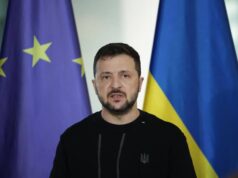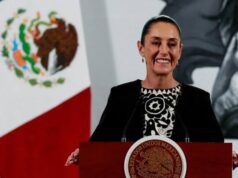India Comes To Sri Lanka’s Rescue While China Continues with tail twisting

As Sri Lanka’s economic crisis became critical, there began large-scale protests leading to national political instability. Sri Lankans angered by the government’s mismanagement of financial affairs, high level corruption and bad judgment on political closeness with China that backfired have come out on the streets. The country has been impoverished in terms of foreign exchange reserves to buy oil, gas, grain and other essential imports.
The Sri Lankan government has been unable to import even paper for the printing of exam papers, and the print media is already feeling the strain of a paucity of paper for printing newspapers.
The people experienced interruptions in daily life on a scale never seen before in Sri Lanka’s history. Rising living prices, petrol, gasoline, and commodity shortages, and a lengthy power outage that began in January 2022, perplexed the world. All this has been just because of poor management and selling of the Country’s resources to China for virtually nothing.
In this context, India has rushed to assist the island nation, while China has been trying to virtually black mail by pressing for a Free Trade Agreement. They suddenly stopped their funding spree, therefore in the end the Sri Lankan leaders had to approach India for all of their needs, including loans and other items such as rice, fertilizer, maritime security equipment, train engines, and aide for Northern fishermen families.
The year 2022 can be defined as the year for India to rethink its role in Sri Lanka while also becoming a stronger and more mutually beneficial partner. Previously, India had its own political interests in Sri Lanka and had even earned the fury of the island nation, but that is no longer the case.
After China’s entry into the South Asian region through the Hambantota Port Project, India had to reconsider its regional power strategy and keep China at bay– both as a geostrategic adversary and as a source of border disputes.
Apart from assistance during the pandemic and fertiliser chaos, in which India delivered nano fertiliser to save Sri Lankan farmers, India has offered INR 225 Crore in gasoline and a INR 7500 Crores loan facility to purchase goods from India due to the current economic crisis. India recently pledged to donate medicines to Peradeniya Hospital, which was running low on supplies because purchasing medicines became impossible due to the US dollar crisis.
Prior to issuing the INR 7500 Crores loan, discussions were held in New Delhi. Indian Prime Minister Modi also met with Finance Minister Basil Rajapaksa, who resigned on April 5, and asked why the India-funded Northern airport in Palaly and the Indian Cultural Centre in Jaffna, which was built with an Indian donation, were not available to the public.
It was claimed that PM Modi told the Minister that if he came to Sri Lanka, he would like to come through Palaly, hence the airport should remain operational.
The Indian government extended funds to establish a high-tech Cultural Centre in Jaffna, the Jaffna International Airport, and the Indian High Commissioner in Colombo Baglay recently paid a visit to the Northern fishermen to assess their needs.
The Indian High Commissioner has been too preoccupied with shuttling between Colombo and New Delhi, conveying signals from Sri Lankans to the Indian government, and has pushed India to supply everything to Sri Lanka strategically to keep China at bay.
India nodded and rushed to meet Sri Lanka’s needs without leaving a gap so that no other country would grab the opportunity.
On March 18, 2022, India made significant contributions to Sri Lanka’s defence sector. Sri Lanka has requested grant assistance for the supply of a 4,000 MT Floating Dock (FD) for the Sri Lanka Navy.
According to India, it goes beyond the current broad range of defence cooperation. The FD was built in Goa and will be primarily stationed in Trincomalee, while the dock may be moved around at the discretion of the Sri Lankan government with prior notice, except for the Port of Hambantota which is controlled by China. When the time comes to relocate it, India will examine the safety, economics, and the most efficient and effective use of the FD.
There will also be an India-Sri Lanka joint monitoring committee to be set up consisting of members from both Governments of India and Sri Lanka to review progress. The FD cost INR 150 Crores and the payment will be made by the Indian Government to the seller in Goa and Sri Lanka is requested to clear it free of charge when it arrives in Colombo.
The Indian government then provides Indian built DO-228 Dornier Reconnaissance Aircraft for maritime surveillance. It has the capability to conduct maritime surveillance and search and rescue operations in and around Sri Lanka’s Exclusive Economic Zone. India said Sri Lanka is not subject to any financial obligations and the cost will be borne by India.
On March 15, 2022, Indian High Commissioner Gopal Bagle and Defence Secretary Kamal Gunaratne signed a grant covering this.
Furthermore, India stated that a US$ 100 million continuing Indian LOC has been completely committed to date for various defence projects, and hence no funding is available under this LOC for the proposed Dornier 228 aircraft procurement.
Furthermore, one Dornier aircraft will be provided as a grant, while another would be delivered through the Indian Credit Line. The Dornier DO-228 has a credit line of US$ 29.46 million, which will be financed in part by an Exim Bank credit facility, according to India.
Then there’s the Maritime Rescue Coordination Centre (MRCC), created by Bharat Electronic Ltd India with a US$ 6 million grant. In fact, the MRCC is manufactured by BEL comprising standard equipment technical publications and spares built to the nomenclature. Also, an India-Sri Lanka Joint Monitoring Committee will be set up consisting of members from both governments.
India also signed an MoU for the establishment of modern computer labs and smart boards with customised curriculum software in schools in the Galle District.
Also, an MoU between the Sushma Swaraj Institute of Foreign Service, India, and the Bandaranaike International Diplomatic Training Institute was signed. Another MoU signed was on the implementation of a hybrid power project in the three northern islands after many controversies.
The Indians also approached Sri Lanka to sign an agreement in developing the fisheries harbours of Sri Lanka.
While India and Sri Lanka completed all of these agreements, China traded with Sri Lanka to negotiate a Free Trade Agreement. This was prompted by China’s announcement that it is willing to pay USD 2.5 billion to the Sri Lankan government if the FTA is signed, as proposed by China’s Ambassador to Sri Lanka, Qi Zhenhong.
Ambassador Qi told reporters last month that Beijing is providing a loan of USD 2.5 billion, of which 1 billion will be a loan and 1.5 billion will be a buyer’s credit.
While Ambassador Qi stated that China had signed 26 free trade agreements, he also stated that finalising the planned FTA between Sri Lanka and China would greatly help the local market and products in Sri Lanka. However China has been holding on to the payment, leading to the present crisis.
The tail twisting is evident.




